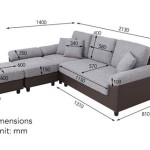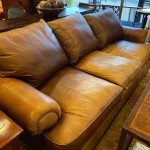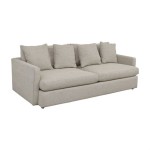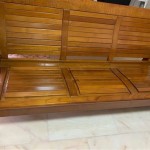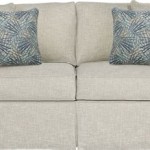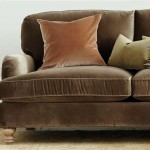What Is Split Leather Sofa?
The term "split leather sofa" refers to furniture upholstered using a specific type of leather derived from the underside of an animal hide. Understanding the characteristics, manufacturing process, and implications of split leather is crucial for informed purchasing decisions regarding sofas and other leather goods. This article will delve into the intricacies of split leather, its properties, differences from top grain leather, the tanning process, and considerations for care and maintenance, providing a comprehensive overview for consumers.
Leather, in its various forms, has been used for centuries due to its durability, aesthetic appeal, and comfort. Split leather represents a more economical option within the broader leather market, often employed to create products that mimic the look and feel of higher-grade leathers at a reduced cost. However, recognizing the differences between split leather and other types is paramount to managing expectations regarding longevity, texture, and overall performance of a split leather sofa.
Understanding the Leather Splitting Process
The production of split leather begins with a full-grain animal hide, typically from a cow. This hide is significantly thicker than the leather required for most upholstery applications. To make the hide workable, it is horizontally split into multiple layers. The uppermost layer, which retains the natural grain and possesses the highest quality fibers, is known as top grain leather. The remaining layers, situated beneath the top grain, are referred to as split leather.
The splitting process is facilitated by specialized machinery that utilizes a blade to precisely divide the hide into distinct strata. The number of splits obtained from a single hide can vary depending on the thickness of the original hide and the desired thickness of each resulting layer. The top grain, due to its superior fiber structure, is typically reserved for premium leather goods. Split leather, lacking the tightly interwoven fibers of the top grain, undergoes further processing to enhance its appearance and durability.
It's important to note that split leather does not possess the natural grain pattern that characterizes top grain leather. To compensate for this, split leather is often embossed with an artificial grain pattern. This embossing process aims to replicate the aesthetic of top grain leather, making the split leather more visually appealing for use in upholstery and other applications. The depth and authenticity of the embossed grain can vary widely depending on the manufacturing techniques employed.
Characteristics and Treatment of Split Leather
Split leather, being a byproduct of the top grain leather production, exhibits different physical and aesthetic properties. Primarily, it is less resistant to wear and tear compared to top grain leather. This difference stems from the looser fiber structure within split leather. The fibers are not as tightly packed, making it more susceptible to stretching, tearing, and abrasion. Therefore, split leather sofas may show signs of wear more quickly than sofas made from top grain leather, under similar usage conditions.
To improve the durability and appearance of split leather, it commonly undergoes a surface treatment process. This often involves applying a polyurethane (PU) or vinyl coating to the split leather. This coating provides a protective layer, enhancing resistance to stains, scratches, and water damage. The coating also allows for a wider range of color options, as the underlying split leather can be dyed and then sealed with the colored coating. This surface treatment significantly alters the texture and feel of the leather.
The application of a coating can create a more uniform and consistent appearance on the split leather. This uniformity can be desirable for some consumers who prefer a flawless look. However, it also masks the natural variations and imperfections that are characteristic of genuine leather. The coated surface tends to feel less supple and more synthetic to the touch compared to uncoated top grain leather. The breathability of split leather is also reduced by the coating, potentially leading to increased heat retention and discomfort in warmer conditions.
Another form of split leather is suede, which is created by abrading the flesh side of the split, resulting in a soft, napped surface. Suede is known for its distinctive texture and is often used in clothing, shoes, and furniture upholstery. However, suede is also more susceptible to staining and damage due to its open-pored structure. Special care and cleaning products are required to maintain the appearance and longevity of suede sofas.
Distinguishing Split Leather from Top Grain Leather
Identifying whether a sofa is upholstered with split leather or top grain leather can be challenging, particularly when the split leather has been heavily treated. However, several key distinctions can help consumers make informed assessments. Firstly, top grain leather typically exhibits natural grain variations, including wrinkles, scars, and insect bites. These imperfections are a testament to the natural origin of the leather and are often considered desirable characteristics. Split leather, especially when embossed and coated, tends to have a more uniform and consistent appearance, lacking these natural markings.
The texture of the leather is another important indicator. Top grain leather generally feels more supple and flexible, with a natural warmth to the touch. Split leather, particularly when coated, can feel stiffer and more synthetic. Performing a simple touch test can sometimes reveal the difference. The edge of the leather can also provide clues. Top grain leather will often show a natural edge with visible grain layers, while split leather may have a painted or sealed edge.
Price is also a significant factor. Sofas upholstered with top grain leather are typically more expensive than those upholstered with split leather. This price difference reflects the higher quality and durability of top grain leather, as well as the more complex tanning and finishing processes involved. Consumers should be wary of significantly lower-priced leather sofas, as they may be upholstered with split leather or even bonded leather, which is made from leather scraps and fibers.
Examining the manufacturer's description and product specifications is crucial. Reputable retailers will explicitly state the type of leather used in the upholstery. Look for terms like "top grain leather," "full grain leather," or "genuine leather." If the description does not specify the type of leather or uses vague terms, it is likely that the sofa is upholstered with split leather or a similar less expensive material. Asking the retailer directly about the type of leather used is always a prudent step before making a purchase.
Caring for Split Leather Sofas
The care and maintenance of a split leather sofa differ from that of a top grain leather sofa due to the differences in material composition and surface treatment. In general, split leather sofas require more frequent cleaning and protection to prevent damage and maintain their appearance. Regular dusting and vacuuming are essential to remove dirt and debris that can accumulate on the surface and potentially cause abrasion.
For cleaning spills and stains, it is crucial to act quickly. Blot the spill with a clean, dry cloth to absorb as much liquid as possible. Avoid rubbing the stain, as this can spread it and potentially damage the surface coating. Use a mild detergent diluted in water to gently clean the affected area. Test the cleaning solution on an inconspicuous area of the sofa first to ensure that it does not cause discoloration or damage. After cleaning, wipe the area with a clean, damp cloth and allow it to air dry completely.
Avoid using harsh chemicals, abrasive cleaners, or solvents on split leather sofas, as these can damage the surface coating and potentially cause the leather to crack or peel. Leather conditioners designed specifically for coated leather can be used periodically to help keep the surface supple and prevent it from drying out. However, it is important to choose a conditioner that is compatible with the type of coating on the split leather. Always follow the manufacturer's instructions carefully when using any cleaning or conditioning product.
Protecting the split leather sofa from direct sunlight and heat is crucial to prevent fading and cracking. Prolonged exposure to sunlight can cause the color to fade, while heat can dry out the leather and cause it to become brittle. Position the sofa away from windows, radiators, and other sources of heat. Using window coverings such as curtains or blinds can help to reduce the amount of sunlight that reaches the sofa.
Finally, professional leather cleaning services can provide a more thorough cleaning and conditioning treatment for split leather sofas. These services utilize specialized equipment and products to safely and effectively remove dirt, stains, and other contaminants. Consulting with a professional leather cleaner can help to determine the best cleaning and maintenance plan for a specific split leather sofa, ensuring its longevity and preserving its appearance.
Full Grain Leather Vs Top Split Wfmo

What Is Split Leather It The Same As Splitting Leatherneo

Baltimore 4 Seater Split Sofa In Leather Dansk

Leather Split And Tear Repair The Expert

Alexander James Bailey Leather 4 Seater Sofa Split Furniture World

How To Spot Great Quality Leather Top Grain Vs Full

3 Seater Sofa Faux Leather Golden Brown Chesterfield Beliani Nl

Sisi Italia Lucca 4 Seater Split Sofa

Aubrey Leather Maxi Split Sofa Lee Longlands

Homestock 76 37 In W Caramel Faux Leather Convertible Tufted Split Back Futon Sofa 2 Seat Bed 21106w The Home Depot
Related Posts

